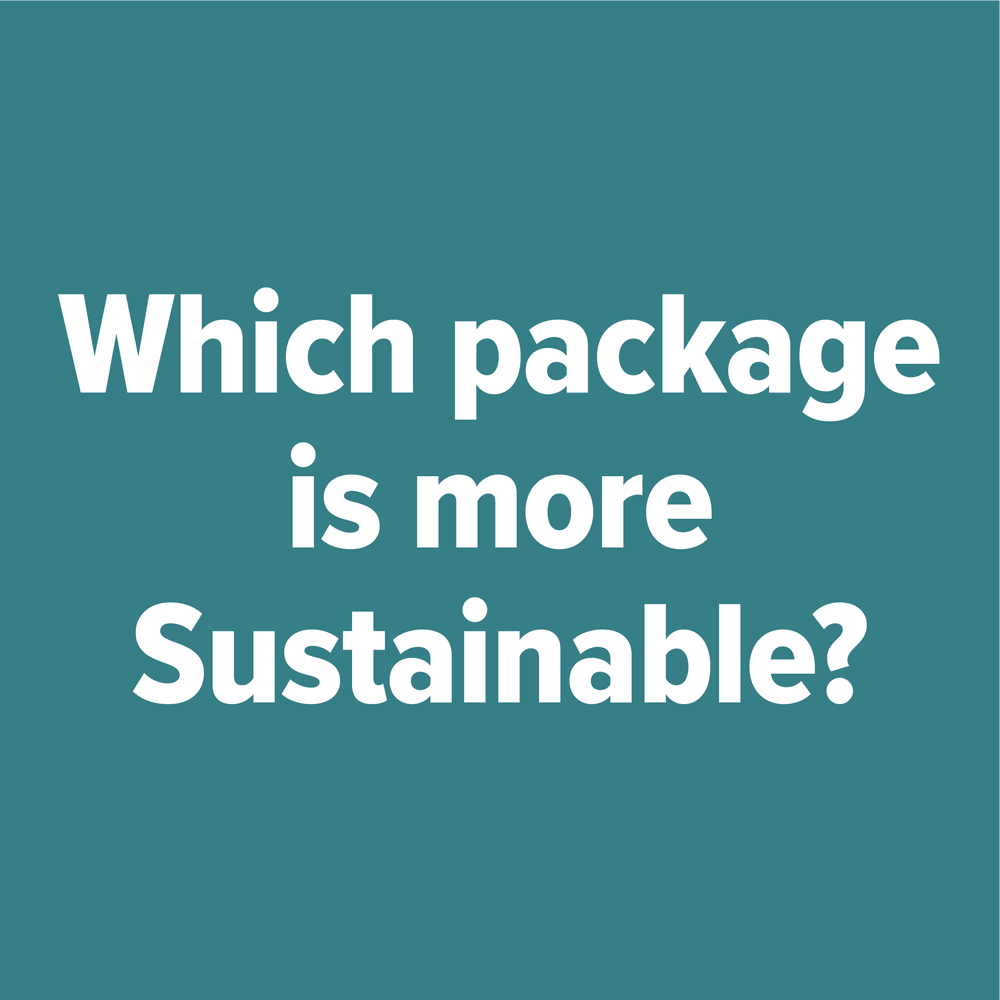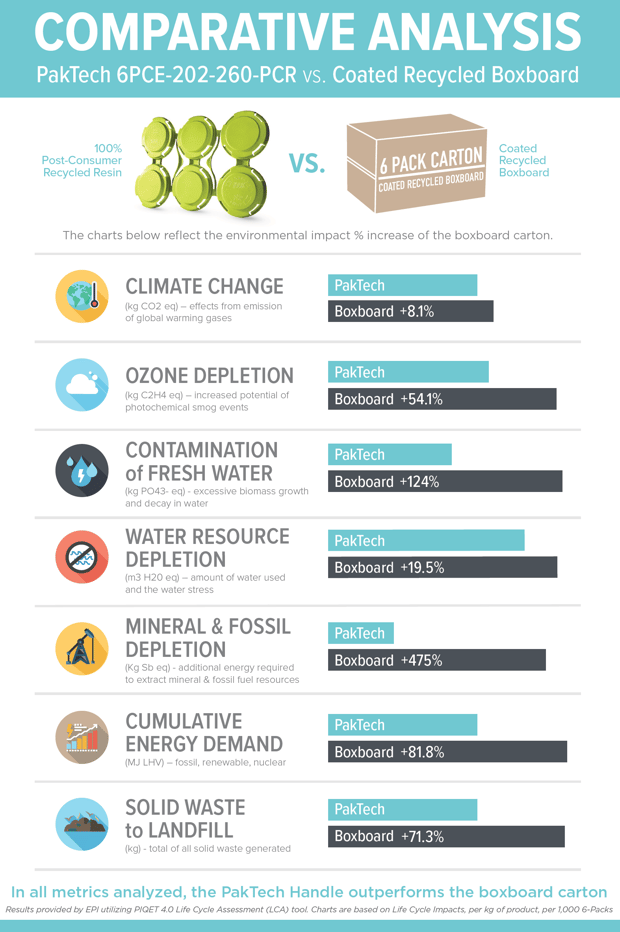COMPARATIVE ANALYSIS
PakTech vs. Paperboard
Environmental impacts based on life-cycle metrics and packaging attributes
Results provided by EPI utilizing PIQET 4.0 Life Cycle Assessment (LCA) tool
ANALYSIS PARAMETERS
The results are presented as impacts per kg of product carried, based on packaging characteristics, number of units sold (assumed to be 1,000 retail units), as well as the target market.
For this analysis, the target market has been assumed to be the US for both packaging systems. For material coefficients consistency purposes, all packaging has been considered as supplied from the US.
The Packaging Specific Indicators presented in this analysis are:
- Packaging to Product Ratio
- Packaging to Landfill or Packaging to Recycle
These indicators are calculated on a methodology that is consistent with the Global Protocol on Packaging Sustainability (GPPS) metric calculations.
ASSUMPTIONS
- Analysis performed per 1,000 Retail Units for each of the packages included
- Several brand packages were used, as noted in the “Systems Detail” table.
“Beverage Sector” LCI data was used for the analysis - All packaging materials were assumed to be sourced, converted and filled in the USA
- Recycled Content % was either the current PIQET default for boxboard, or supplied by the manufacturer
- Impacts were calculated per kg of product as unit of measure; the PakTech handles were used as the reference scenario
- Minimal transport-level data was included for transport of materials to converter.
Transport of material for PakTech handles takes place by rail; for boxboard, transport was assumed by truck. The transport distance was assumed identical (500 miles).
MAJOR FINDINGS
Accounting for several phases in the life-cycle analysis (raw material extraction & manufacturing, transport to converter, conversion and end-of-life), the PakTech Handles packaging system generates a lower environmental impact than the boxboard system in all life-cycle metrics evaluated.
In terms of packaging attributes, the PakTech Handles packaging system uses the least amount of virgin content (100%recycled content) and has the best packaging to product ratio.
In terms of the solid waste at the end of its usable life, it was assumed that the PakTech handle would only be recovered in a low, 5%, percentage (based on current available data). However, due to its low weight as compared to the boxboard system, the actual amount disposed in the landfill for the PakTech handles are lower than the amount of fiber that is not being recycled.
INDICATORS
The Environmental Impact Assessment Indicators included in this analysis are shown below; indicators are calculated for all processes considered (e.g., total solid waste generated by the production, conversion, and end of life processes):
- Climate Change (kg CO2 eq) – effects from emission of global warming gases
- Photochemical ozone formation (kg C2H4 eq) – increased potential of photochemical smog events due to the chemical reaction between sunlight and specific gases released into the atmosphere
- Eutrophication (kg PO43- eq – fresh water impact; addition of nutrients causing
excessive biomass growth and decay in water) - Water Resource Depletion (m3 H20 eq) – takes into account of both the amount of water used and the water stress in the area where the water is taken from
- Abiotic Depletion - mineral, fossil (Kg Sb eq) - The additional energy required to extract mineral & fossil fuel resources due to depletion of reserves, leaving lower quality reserves behind
- Cumulative Energy Demand (MJ LHV) – fossil, renewable, nuclear
- Solid Waste (kg) - total of all solid waste generated by the processes considered during the life cycle


